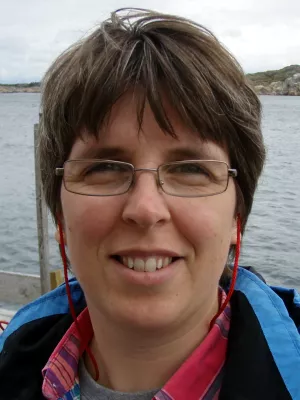
Helena Alexanderson
Professor

Recent advances in luminescence dating of the Late Quaternary sediments in the Baltic States, Northern Europe : A review
Författare
Summary, in English
Late Quaternary glaciations, deglaciations, sea-level changes and aeolian activity have resulted in an abundance of clastic sediments that currently cover the three Baltic States, Northern Europe almost entirely. The chronology for these deposits has largely been established from luminescence dating. This review synthesises 201 luminescence ages obtained between 2011 and 2021 on sediments in the Baltic States and addresses research questions about luminescence dating reliability, potential dating problems and future research directions, as well as the distribution of ages. The samples are divided into three origin groups: (1) fluvio-limnoglacial, (2) aeolian and (3) coastal sediments. The obtained ages cover a wide time span of nearly 200 ka between 198 ka and 0.215 ka. Statistically, 9 age clusters are identified by cluster analysis after data filtering, with the largest cluster of 15.9 ka–0.215 ka ages, which consists of sediments of aeolian and coastal deposition. All aeolian ages cluster in two higher-order groups with deposition at around 15.9–10.5 ka and between 9.2 ka and 8.0 ka, with a hiatus at around 10.5–9.2 ka. Both quartz and feldspar luminescence dating has been carried out in the region, with a slight dominance of the former. The quartz luminescence signal is generally strong, but in places, particularly for aeolian sediments, suffers from apparent feldspar contamination. Luminescence ages are sometimes overestimated, and this is mainly interpreted as an effect of incomplete bleaching, which is seen from wide and skewed dose distributions and is especially valid for the fluvio-limnoglacial group. Finally, independent age control for specific sites is rare, which seriously hampers methods intercomparision. This is partly due to the lack of organic material – and thus radiocarbon dates – within the clastic sediments. Environmental dose rate values span between 1.31 Gy/ka for quartz and 3.31 Gy/ka for feldspar, showing the range that can be expected in the Baltics.
Avdelning/ar
- Kvartärgeologi
Publiceringsår
2023-01
Språk
Engelska
Publikation/Tidskrift/Serie
Earth-Science Reviews
Volym
236
Länkar
Dokumenttyp
Artikel i tidskrift
Förlag
Elsevier
Ämne
- Geology
Nyckelord
- Age control
- Age overestimation
- Age underestimation
- Baltic States
- Cluster analysis
- Dose rate
- Feldspar contamination
- IRSL
- OSL
- Partial sediment bleaching
Status
Published
ISBN/ISSN/Övrigt
- ISSN: 0012-8252

